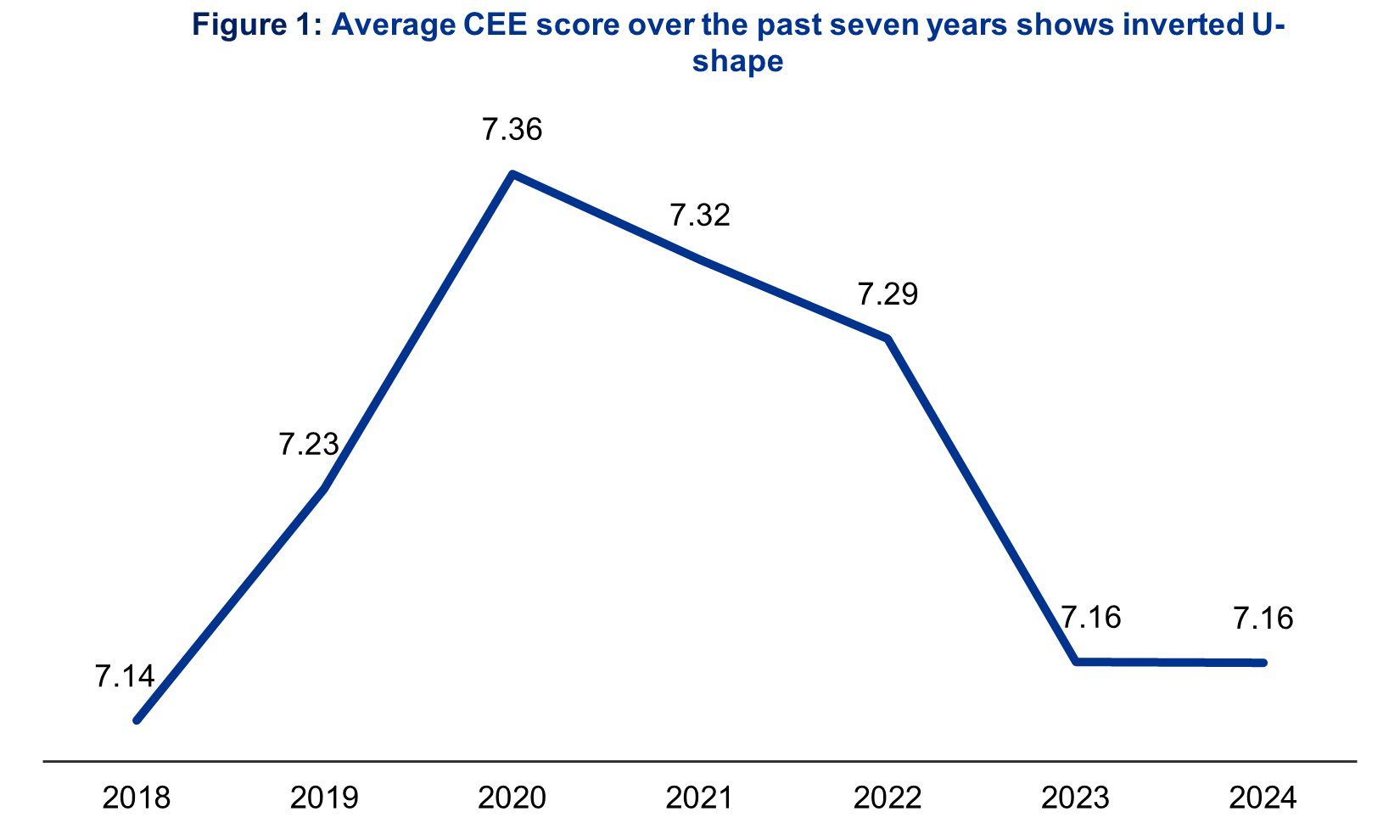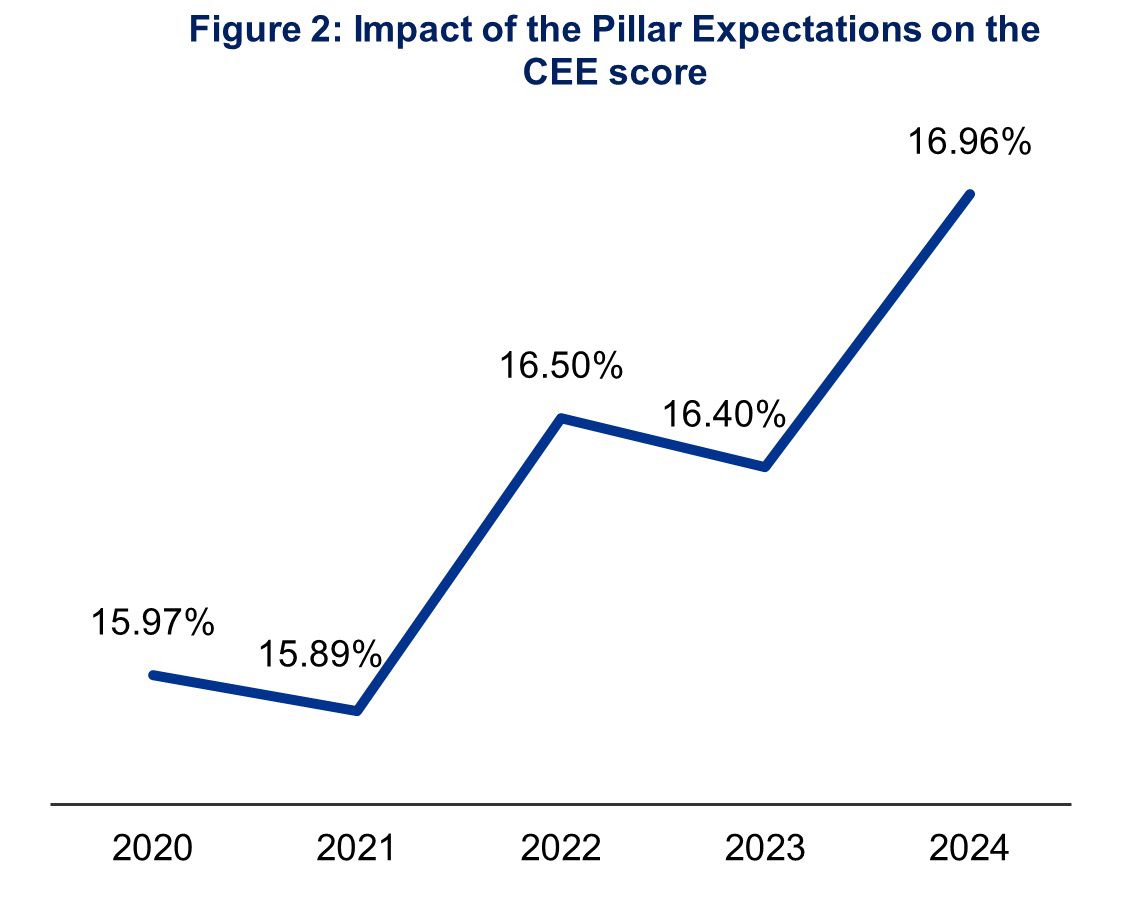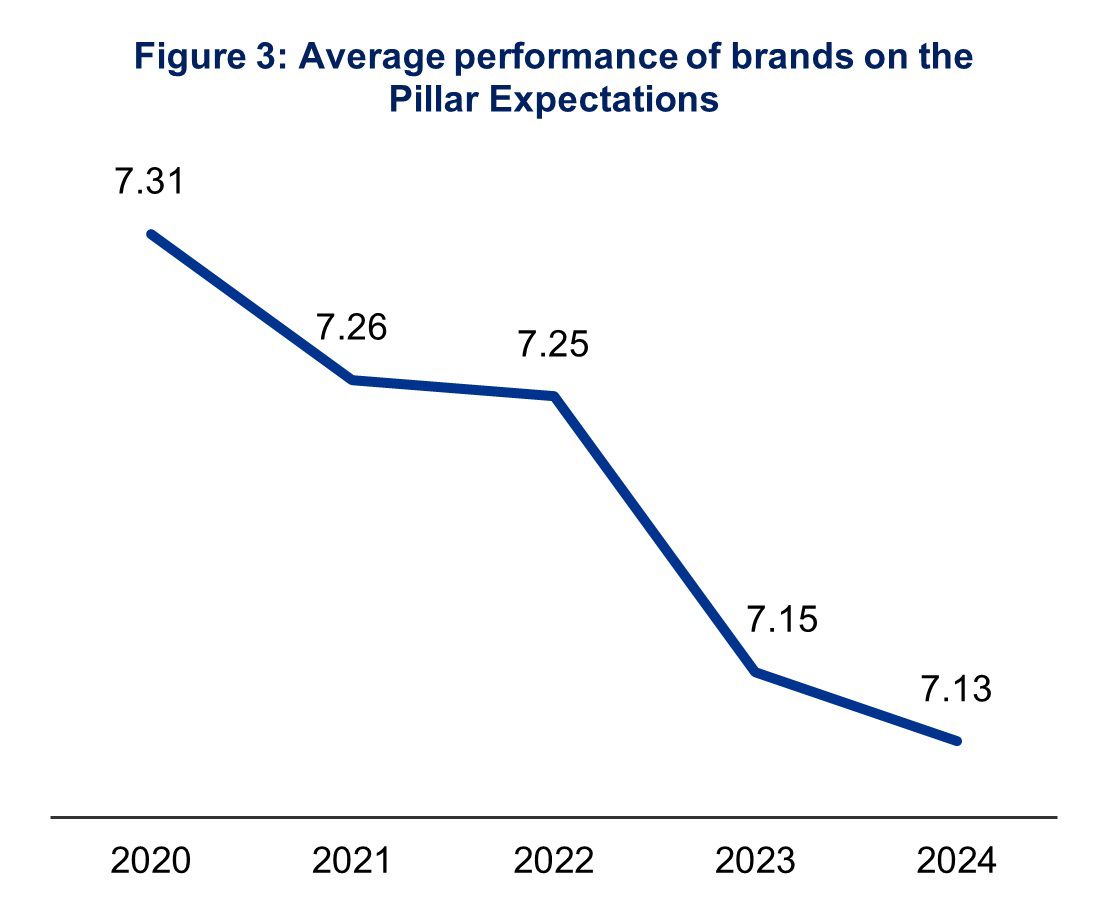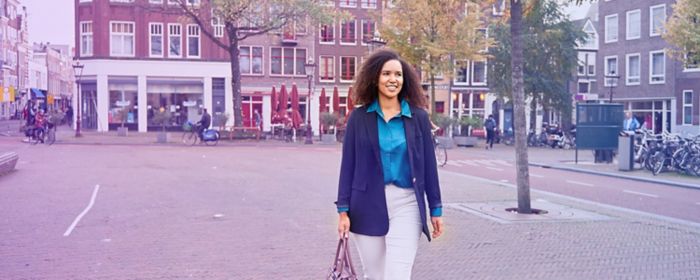The year 2024 was marked by the uncertain, yet increasingly demanding consumer. Political and economic turbulence, further influenced by social debates on topics such as polarization, economic security, migration, and climate change, had a significant impact on this. These factors amplified the sense of uncertainty, which was reflected in Dutch consumption numbers. Consumption did grow, but significantly less compared to previous years1. Meanwhile, technological evolution continued unabated, with the impact of AI possibly even being deservedly called a revolution. For many organizations, it is a matter of keeping up or falling behind in what might be called a 'perfect storm’.
Each year, KPMG's Customer Experience Excellence (CEE) research measures how Dutch customers value their interactions with a range of brands. For the seventh consecutive year, more than 5,000 customers were extensively asked about their customer experiences with over 200 brands. The results provide profound insights into movements and trends. Fieldwork was conducted in May and June 2024.
Over the past seven years, the average CEE score has shown an inverted U-shaped trend (see Figure 1). Starting from 2018, the score steadily increased and, due to the drastic changes in the world of customer experience brought by COVID, reached a peak in 2020 (7.36). However, from that point on, the score gradually declined to 7.16 in 2023. The results of 2024 did not show a break with this trend, as the score settled again on 7.16. Overall, a downward trend is noted.

Customers are expecting more and more
The CEE model measures customer experiences across The Six Pillars (Personalization, Integrity, Time & Effort, Expectations, Resolution, and Empathy), which together, through a weighted average, form the CEE score. The Pillar of Personalization remains the most important for respondents, but the Pillar of Expectations has been steadily rising for several years. Customers simply expect more and more from brands (see Figure 2). In contrast to these growing expectations, the actual scores of organizations on the Pillar of Expectations are declining (see Figure 3). Accordingly, this would suggest that brands are increasingly unable to meet consumer expectations.


One of the main reasons for this increasing gap seems to lie in the rapid advancements in technology. In 2024, customers expected (although they might phrase it differently) organizations to provide an omnichannel experience, maintain a 360-degree customer view, offer real-time information, and deliver efficient solutions. Especially considering the increasing opportunities that (Gen) AI presents, it seems evident for customers to expect organizations to easily and quickly elevate their customer experience to a higher level.
However, reality proves to be more unwieldy. Large organizations are struggling to adapt quickly enough to these technological changes. This issue is arising in all sectors, though it manifests itself to different degrees. For instance, Grocery Retail, which has again topped all sectors in our CEE research when it comes to customer experience, is somewhat less affected than, for example, the Public Sector, which ranks second to last. Unfortunately, it often takes years to replace old systems and implement new technologies. This discrepancy between expectations and reality is leading to a growing frustration among customers, thus increasing the pressure on organizations to innovate and keep up with the latest technological advancements.
Stand out despite uniform tools
However, simply implementing the latest technological developments is not enough for organizations. There is a looming danger that brands may increasingly resemble each other in the eyes of customers. This happens because many organizations use the same technological tools and often apply them in a generic way without sufficiently considering brand differentiation. Instead of using technology to strengthen their brand identity, organizations often choose a purely functional approach. As a result, technology is set up to achieve practical goals, such as efficiency or cost savings, without incorporating unique brand values into the implementation at hand.
Branded Customer Experience (CX) could be the answer here. It involves delivering customer experience in a way that is unique to the brand and that visibly and recognizably aligns with all touchpoints in the customer journey. A strong Branded CX goes beyond integrating the core values of a brand into a service or product. It is about creating an experience that reflects the personality and authentic aspects of the brand in every interaction between the consumer and the company. Therefore, the challenge lies not only in applying new technologies but also in ensuring that the brand identity is maintained within these technological applications or choices. Organizations that succeed in harmoniously combining technology with their unique brand values create a competitive advantage.
An excellent example of Branded Customer Experience (CX) is Rituals, a brand that offers luxury care products, such as body care, scented candles, and tea. Rituals creates a holistic brand experience by immersing customers in a world of tranquility and mindfulness, called House of Rituals. This brand goes beyond just selling products: Rituals aims to transform everyday routines into relaxing rituals. The stores have a calming atmosphere, with soothing music and scents that stimulate the senses. Employees offer tea and take the time to explain the products, contributing to a luxurious and personal shopping experience. All of this reflect the core values of Rituals, namely relaxation and self-care. Additionally, Rituals' website is designed to provide the same serene and personal experience as the one in-store. The product pages are rich in content, with explanations of the benefits of each product and suggestions on how customers can use them to create their own rituals.
This approach to CX ensures that every interaction with Rituals – both online and offline – consistently reflects the brand values of escapism, luxury, and self-care, enabling customers not just to purchase products but to experience something that enriches their daily lives. The right implementation of Branded CX requires a strategic approach in which technology is seen as an extension of the brand, not just a means to achieve more efficiency. This way, organizations not only bridge the technological gap but also ensure a Branded Customer Experience that distinguishes them from the competition and, more importantly, deeply resonates with their customers.
A future-proof customer experience
The Dutch CEE research shows that in the uncertain consumer landscape of 2024, meeting customer expectations is more important than ever. Brands that are unable to keep up with these changing expectations and technologies do not only risk ending up with a deteriorating customer experience, but also with customer loss. The challenge lies in merging expectations, technology, and brand identity.
Do you want your company to truly stand out and meet the changing customer expectations of the future? Would you like to know where your brand is listed in the 2024 CEE ranking? Or are you curious about how we can help you strategically and operationally distinguish your CX from the competition? Contact us.
Want to read more? Research on customer experience has been conducted not only in the Netherlands but also worldwide. Download the Global Report, in which you'll find insights from over 86,000 customers across 23 countries on their experiences with various brands.
Key findings from our ‘2024 NL Customer Experience Excellence’ research
- De Echte Bakker has been awarded the best-performing brand in 2024 thanks to its in-store experience, which feels personal and warm, along with the high quality of its products. Bol came in second place, and Hans Anders secured the third spot.
- ASN Bank is rated by Dutch customers as the top-performing company in the field of ESG, followed by Too Good To Go.
- On sector level, Grocery Retail once again performs best, with an average score of 7.35. However, Non-Grocery Retail is closing in with an average score of 7.34. Financial Services ranked third among the sectors (7.24). The Public Sector and Logistics are rated lowest, with scores of 6.42 and 6.41 respectively.
- The variance in CEE scores between the brands has never been as wide in the past seven years as it is this year. This means that there is a significant gap between brands that score high and low on customer experience.
- Although Personalization has had the greatest impact on the CEE score for the seventh consecutive year (20.6%), and Integrity follows closely (18.4%), the Expectations Pillar shows an increasing trend (17.0%).


